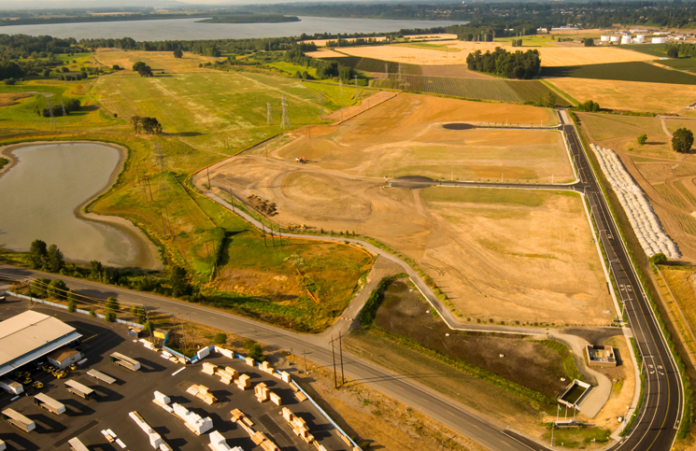In 2011, with the cooperation and input of a dynamic group of local stakeholders, the Clark County Economic Development Plan (EDP) was prepared for the Columbia River Economic Development Council (CREDC). It was a comprehensive resource meant to not only serve as a roadmap, but as a living document to frame future growth in the context of the needs of a thriving community.
Recently, the plan’s relevance and usefulness was further proven when another group of local representatives came together and volunteered many hours to birth the Clark County Employment Land Study – a deeper dive focused on one key area of the initial EDP: the supply and readiness of area industrial sites.
It is interesting to note that in the initial EDP, a SWOT (strengths, weaknesses, opportunities and threats) analysis was conducted. At the core of this focused county snapshot, the lack of shovel-ready industrial sites was listed as a weakness and chronic high unemployment as a threat.
The recently rolled out 2016 Employment Land Study specifically targeted five potentially developable sites to determine the following results and economic impacts:
- $40.9 million investment for site readiness ($2.25 per net developable square feet)
- $453.8 million investment for construction cost
- Jobs: 5,367
- Labor income: $408 million
- Estimated average wage: $61,600
- Sales tax revenue over 20 years: $162 million
- Property tax revenue over 20 years: $74.3 million
Clearly, energy directed to the development of industrial sites would produce significant benefits to current and potential Clark County residents. Magnify this by the fact that the land study determined 56 sites at 20 acres or larger currently zoned for employment purposes and the impact grows exponentially.
The CREDC’s 2011 EDP identified six target industries that the employment land study kept in mind when conducting its research. Those were: technology services, technology products, wealth management services, agricultural processing, healthcare administration, and logistics and distribution.
Jeff Swanson, city manager for the city of Battle Ground, was an active voice in the 2016 study findings. He stated that another positive impact of filling these identified sites was that by creating more family-wage jobs, people could work closer to their homes and lessen the burden on the interstate transportation system. He went on to cite that 65,000 to 75,000 Clark County residents commute across the bridges every day.
What the study also uncovered were the challenges that lie ahead. Of those 56 sites mapped throughout the county – a total of 3,950 gross acres and 3,000 net developable acres – only 15 are in a position to be development-ready in six months. The vast majority are anywhere from 13 months to more than two and a half years out.
Swanson explained how this information will be used for short-term and long-term planning.
“For public agencies, how do we take this information then and prioritize our capital facilities plan? Where do we build and improve roads? [Where do we] work with sewer districts, water providers [and] utilities? How do we work with these partners to develop these projects? With limited resources we need to invest in these types of economic impacts,” Swanson said. “In the end it’s all about generating employment and family-wage employment in our community.”
Brittany Bagent, director of research and economic strategy for CREDC also weighed in on how the study will be used by their Lands for Jobs Committee, local jurisdictions and others when assessing policy initiatives. One example she shared was the permitting process.
“[The permitting process] generally begins with a one-to-two month pre-application phase before moving into preliminary land use review. In total, the permitting process can last for a total of nine months. Seeing that this process demands resources of time and money, recommendations for streamlining or accelerating might result,” Bagent said.
Swanson and Bagent both mentioned the opportunity to leverage public funding for site improvements as a result of the study’s findings. Having a quantitative analysis measuring jobs, wages and property tax revenue in contrast to the investment of site development can open up funding options for such things as state and federal mandates for waste water treatment.
Once the identified land is developed and absorbed into the economy, working jointly will continue to be essential in the forward motion of Clark County, the study said. The realities are all intertwined; what drives additional taxable retail sales is people having more dollars in their pockets to spend. However, land to create family-wage jobs doesn’t, on its own, generate retail sales. Industrial land must be set aside for future growth and yet some of that land is located along corridors that compete with residential use.
“It takes a proactive collaborative approach such as this study,” Swanson explained. “Looking out further, you can use this method and look at large rural parcels and designate them for that kind of development so that Clark County doesn’t further slip into a bedroom community that relies on another state for income.”
Mike Bomar, president of CREDC, believes the updated industrial land inventory can act as a springboard for infrastructure investment prioritizing and he’s confident that community partners will utilize the information to engage policyholders, elected officials and other business leaders.
“I’m just really excited that we have this work and the willingness of the county,” he said. “I’m encouraged that we have the right people going forward to make good use of this document.”








